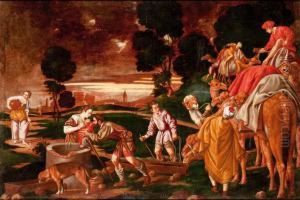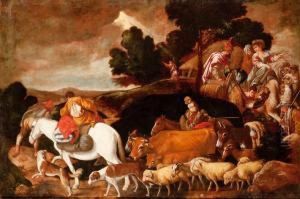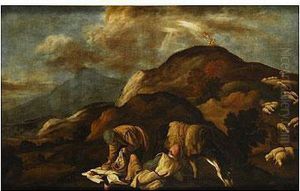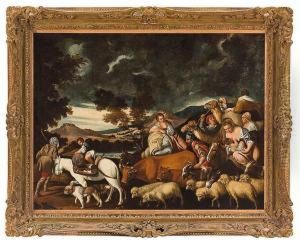Pedro Orrente Y O Taller Paintings
Pedro Orrente was a Spanish painter who is often regarded as one of the pioneers of naturalism in Spain. Born in the town of Montealegre del Castillo, in the province of Albacete, in 1580, Orrente spent a significant part of his career in Italy, which had a profound influence on his style and technique.
During his time in Italy, Orrente was likely exposed to the works of the great Venetian masters, such as Titian and Veronese, as well as the revolutionary naturalism of Caravaggio. These experiences would come to shape his later works, which are characterized by a strong use of light and shadow, as well as a realistic representation of subjects.
Orrente returned to Spain in the early 17th century, where he was notably active in cities such as Toledo, Seville, and Valencia. He became known for his religious paintings, which were sought after for churches and cathedrals. Orrente’s works were distinguished by their vivid portrayal of biblical scenes, often set against landscapes that showcased his mastery of naturalistic detail. These landscapes were not just backdrops but were often filled with a variety of animals and plants, which he rendered with great care and accuracy.
Throughout his career, Orrente gained the nickname 'the Spanish Bassano' due to his fondness for including animals in his compositions, a trait that was reminiscent of the Bassano family, Italian painters who were also known for their inclusion of animals and naturalistic landscapes in their works.
Pedro Orrente's contribution to Spanish art was significant, and he is remembered for his ability to blend the Venetian style he learned in Italy with the Spanish tradition. His works were influential in the development of Spanish Baroque painting, and his legacy is seen in the works of later Spanish artists who followed in his footsteps.
Orrente was not only a prolific painter but also ran a successful workshop. His workshop, or 'taller' in Spanish, was a bustling place where apprentices learned the craft of painting and contributed to the production of artworks. This was a common practice in the artist's time, where the master would often have several assistants who would aid in the completion of large commissions.
Pedro Orrente passed away in 1645, leaving behind a rich body of work that continues to be appreciated for its artistic merit and historical significance. His paintings can be found in various museums and private collections, and they offer a window into the naturalistic tendencies of early 17th-century Spanish art.



